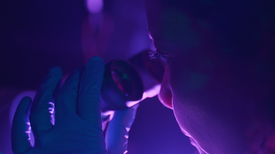The American Museum of Natural History recently received the life’s work of a professor in Minnesota—1,274 jars of crabs collected over decades from around the world.
Christine Johnson: Today we got this wonderful collection of fiddler crabs.
TRANSCRIPT
Carl Thurman: 1274 jars of crabs.
Johnson: It's a lot of crabs. It's a sizable collection. Frank Barnwell, faculty member at the University of Minnesota, has been spending his life doing research on fiddler crabs, and he is donating his collection to our collection.
Thurman: We have 84 of 105 species around the world, and the ranges that Frank has covered gives us a good perspective of the species diversity and the geographic diversity.
Johnson: Dr. Barnwell clearly went to places in the sixties and seventies that weren't so easily accessible, which makes that even all the more sort of valuable.
Frank Barnwell: Fiddler crabs are attractive for many reasons, too. Scientists. They are social creatures that live in large colonies. The males use their large claws for beckoning and waving, trying to attract females from nearby burrows into their own burrows. So each species has its own characteristic display. And so this collection allows for the study of differences in populations across regions and in terms of their anatomical similarities.
Johnson: A lot of people do ask us, why do you have so many of one thing? There is diversity in among species and between species and between groups of organisms. And so when you have a large number of specimens, you can actually see that great diversity.
Thurman: And it also helps in assessing the impact of climate change on species diversity. So when you have rapid sea level changes, certain habitats are covered and there's no evidence of the species there. So museum collections give us a good record of where species have been.
Johnson: We plan to digitize them and put them in our database, and once they're in our database can even put a point on a place in the earth where these came from and people can actually see what we have here.
Barnwell: My hopes are that this will be a resource here in this international museum. There's a fantastic closure to a lifetime of study of these animals.








